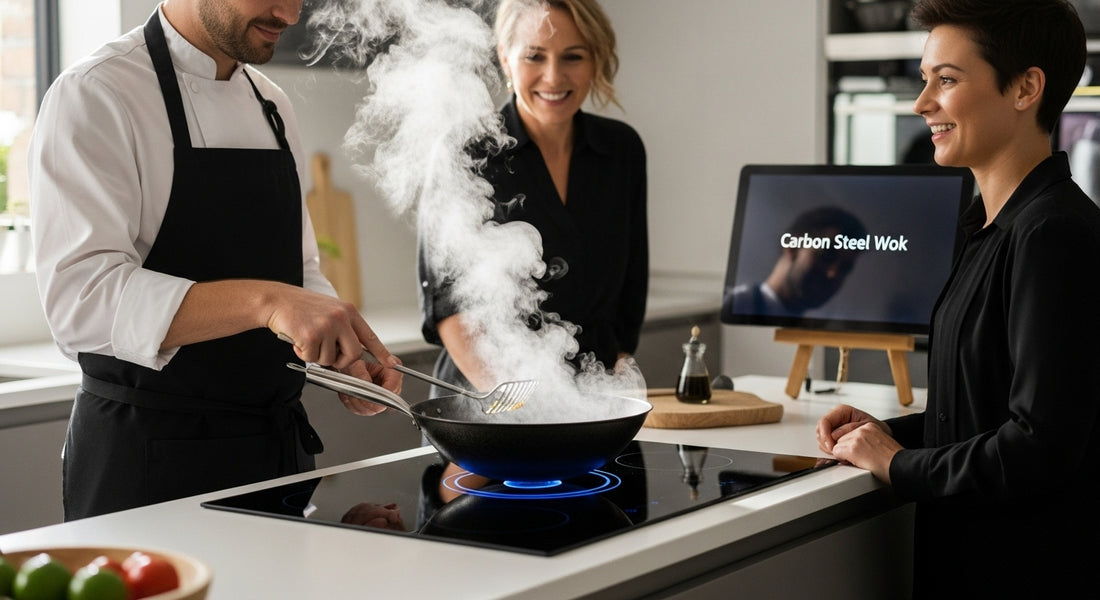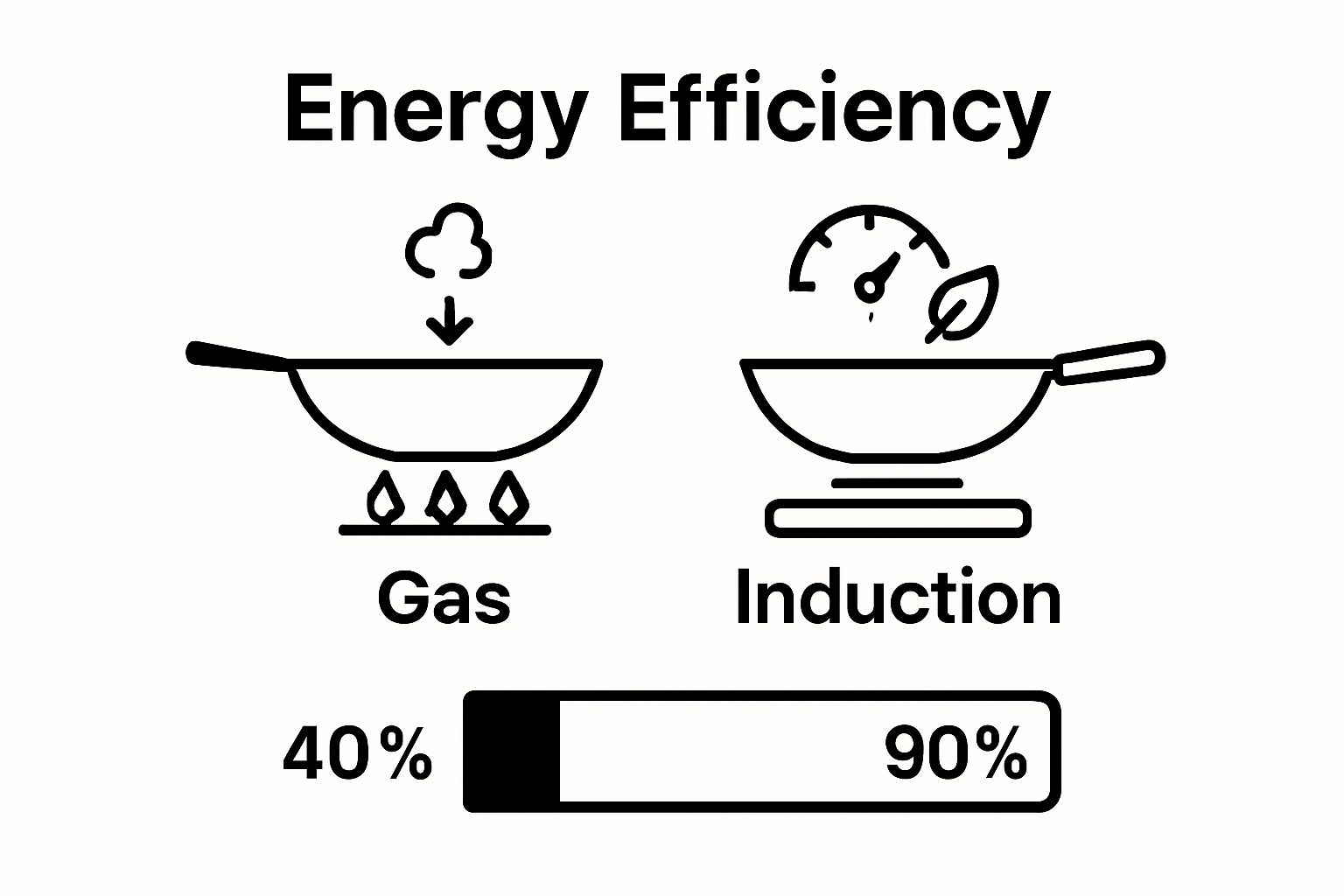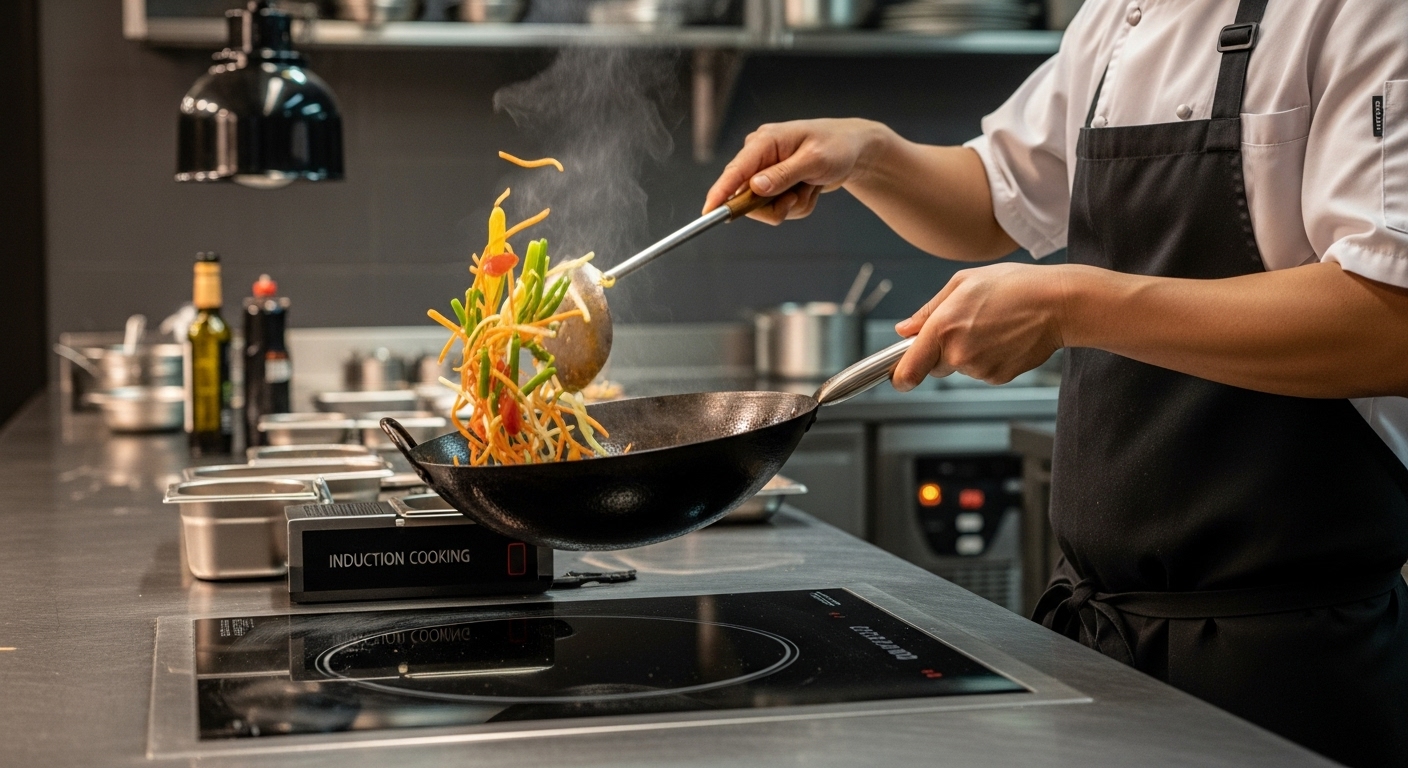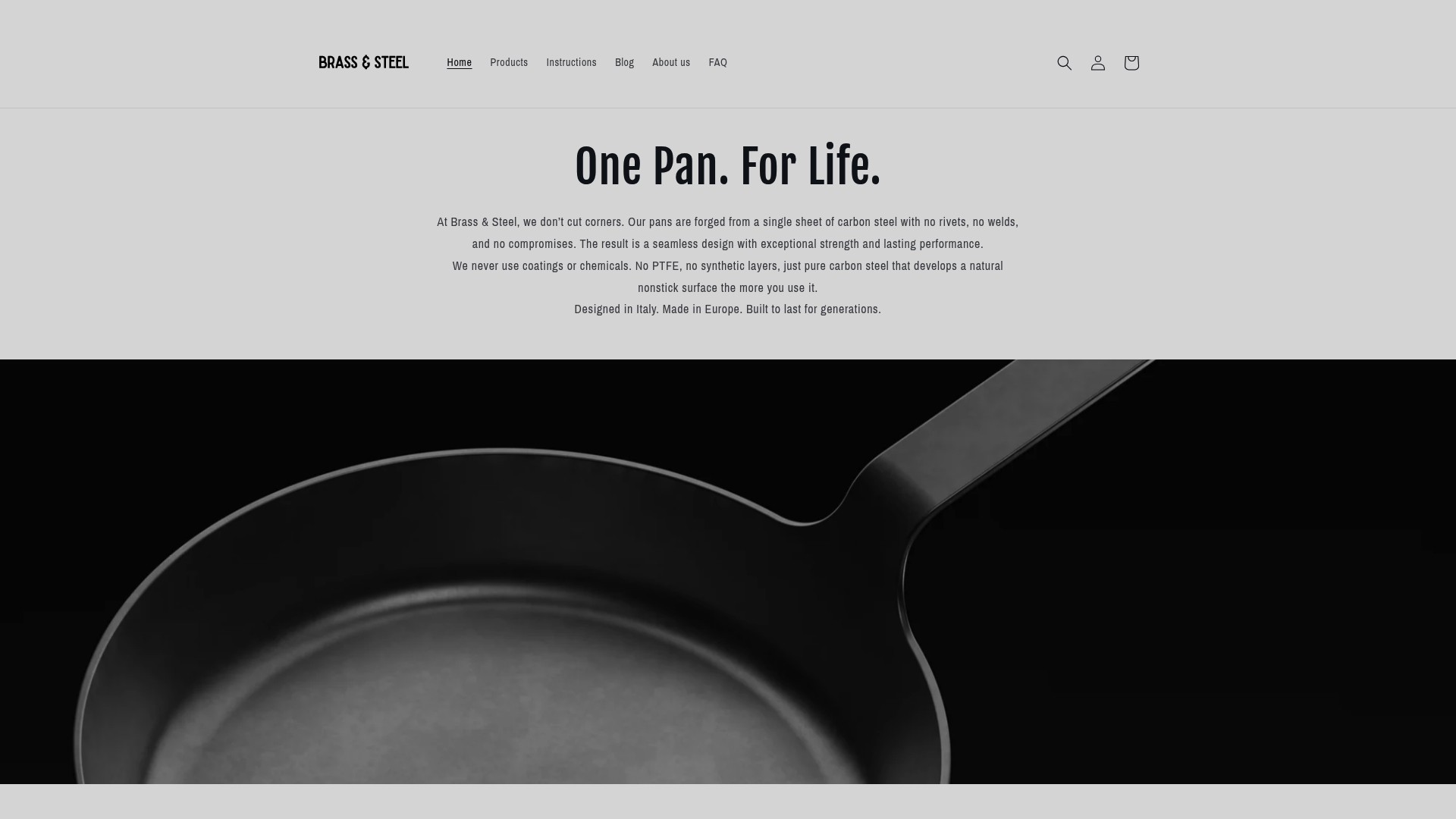
Understanding Carbon Steel Wok Induction for Cooking
Share
Carbon steel woks have become a staple in kitchens chasing authentic Asian flavour and rapid-fire stir frying. You might expect their popularity to rest on tradition or heritage alone, but that is not the case. The real surprise is that carbon steel transmits heat up to twice as fast as cast iron, and when paired with induction cooktops, it unlocks a new level of control and efficiency that even professional chefs crave.
Table of Contents
- What Is Carbon Steel And Why Use It For Woks?
- The Importance Of Induction Cooking In Modern Kitchens
- How Carbon Steel Wok Induction Works: The Science Behind It
- Benefits Of Using Carbon Steel Woks On Induction Cooktops
- Key Considerations When Choosing A Carbon Steel Wok For Induction
Quick Summary
| Takeaway | Explanation |
|---|---|
| Carbon steel woks offer superior heat response | Their high carbon content allows quick temperature changes, ideal for stir frying and other intense cooking methods. |
| Induction cooking ensures energy efficiency | Induction cooktops convert around 90% of electrical energy into heat, minimizing waste and lowering bills. |
| Opt for well-constructed woks for induction | Ensure the wok has a flat base and appropriate thickness for even heat distribution and effective performance. |
| Seasoning enhances carbon steel woks’ nonstick properties | A properly seasoned wok improves naturally with use, developing a beneficial patina that aids cooking. |
| Induction cooking makes kitchens safer | With direct heating of the cookware, the cooktop remains cool, reducing the risk of burns and accidents. |
What is Carbon Steel and Why Use it for Woks?
Carbon steel represents a unique metal alloy engineered with a specific composition of iron and carbon. Typically containing between 0.05% to 2.1% carbon, this material offers exceptional thermal conductivity and durability that makes it perfect for cookware like woks. Wok performance depends critically on material properties, and carbon steel delivers extraordinary culinary capabilities.
Material Composition and Characteristics
Unlike stainless steel or aluminium, carbon steel contains a higher carbon percentage which dramatically transforms its mechanical properties. The carbon content enables the metal to become incredibly responsive to heat, allowing rapid temperature changes during high intensity cooking techniques like stir frying. Professional chefs appreciate carbon steel woks for their ability to develop a natural nonstick patina through seasoning, creating a surface that improves with consistent use.
Key characteristics of carbon steel woks include:
- Extremely lightweight compared to cast iron
- Superior heat distribution and retention
- Ability to achieve high temperatures quickly
- Natural seasoning potential
Performance in Culinary Applications
Carbon steel woks excel in professional and home kitchens due to their remarkable versatility. The metal conducts heat uniformly, enabling cooks to perform complex techniques like rapid stir frying and searing with precision. The thin construction allows for quick temperature adjustments, a critical factor in achieving the authentic “wok hei” flavor profile cherished in Asian cuisine. Read more about advanced carbon steel cooking techniques.
While other materials like aluminium or nonstick surfaces might seem convenient, they cannot match carbon steel’s combination of durability, performance, and natural nonstick properties developed through careful seasoning. A well maintained carbon steel wok becomes more effective with each cooking session, making it an investment in long term culinary excellence.
To help readers quickly compare materials for woks, the following table summarises the most important differences mentioned in the article between carbon steel, cast iron, aluminium, and stainless steel.
| Material | Heat Conductivity | Weight | Nonstick Potential | Responsiveness | Durability |
|---|---|---|---|---|---|
| Carbon Steel | Excellent (fast) | Lightweight | Develops seasoning | Very responsive | Highly durable |
| Cast Iron | Good (slow) | Heavy | Develops seasoning | Slow heat response | Exceptionally durable |
| Aluminium | Very high | Lightweight | Depends on coating | Highly responsive | Less durable, softer |
| Stainless Steel | Moderate | Medium | Limited, no seasoning | Moderately responsive | Durable |
The Importance of Induction Cooking in Modern Kitchens
Induction cooking represents a revolutionary technological advancement that has transformed culinary practices in contemporary kitchens worldwide. By using electromagnetic energy to directly heat cookware, this cooking method offers unprecedented precision, efficiency, and safety.
VIDEO:video_content] [Research from the International Energy Agency indicates that induction technology can significantly reduce energy consumption compared to traditional cooking methods.
How Induction Cooking Works
Unlike conventional gas or electric stovetops, induction cooking generates heat through electromagnetic interactions between the cooktop and compatible cookware. When an electromagnetic field passes through a magnetic material like carbon steel, it creates molecular vibrations that produce heat directly within the pan itself. This means the cooking surface remains relatively cool, dramatically reducing the risk of accidental burns and creating a safer cooking environment.
Key technological advantages of induction cooking include:
- Precise temperature control
- Faster heating times
- Significantly reduced energy consumption
- Enhanced safety features
- Easier cleaning and maintenance
Environmental and Practical Benefits
Induction cooking offers substantial environmental and practical advantages for modern households. The technology enables instant heat control, allowing chefs to adjust temperatures with remarkable speed and accuracy. Learn more about advanced induction cooking techniques to maximise your culinary potential.
Moreover, induction cooktops are remarkably energy efficient, converting approximately 90% of electrical energy directly into cooking heat, compared to around 40% for traditional gas stoves. This efficiency translates into lower electricity bills and reduced carbon emissions, making induction cooking an environmentally responsible choice for conscientious home cooks and professional chefs alike.

How Carbon Steel Wok Induction Works: The Science Behind It
Induction cooking harnesses complex electromagnetic principles to transform how heat transfers between energy source and cookware. For carbon steel woks, this technology creates an extraordinary synergy between material properties and advanced cooking physics. Electromagnetic induction research from MIT reveals the intricate mechanisms behind this remarkable cooking technique.
Electromagnetic Energy Transfer
At the core of induction cooking lies the principle of electromagnetic induction, where electric currents generate magnetic fields that produce heat directly within magnetic materials like carbon steel. When an alternating current passes through the cooktop’s copper coil, it creates a rapidly oscillating magnetic field. Carbon steel woks, being ferromagnetic, respond instantly to these magnetic interactions, generating heat through molecular agitation within the metal itself.
Key scientific characteristics of this energy transfer include:
- Precise molecular vibration generation
- Instantaneous heat response
- Direct energy conversion without intermediate heating stages
- Minimal energy loss during transfer
- Uniform heat distribution across cookware surface
Thermal Dynamics and Material Interaction
Carbon steel’s unique composition makes it particularly suited for induction cooking. The metal’s high iron content and specific carbon percentage create optimal magnetic permeability, enabling efficient heat generation. Learn more about mastering carbon steel on induction to understand how these scientific principles translate into culinary performance.
Unlike traditional cooking methods that heat cookware indirectly, induction technology generates heat directly within the wok’s molecular structure. This means temperatures rise rapidly and can be controlled with unprecedented precision, allowing chefs to execute complex cooking techniques with minimal energy waste and maximum thermal efficiency.
Benefits of Using Carbon Steel Woks on Induction Cooktops
Carbon steel woks and induction cooktops represent a perfect culinary partnership, combining advanced technological innovation with traditional cooking techniques. This combination offers professional and home chefs unprecedented control, efficiency, and performance in their cooking environments. Research from culinary technology experts highlights the remarkable synergy between these two cooking technologies.
Performance and Precision
Induction cooktops unlock the full potential of carbon steel woks by providing instantaneous and precise heat control. The electromagnetic energy transfer allows chefs to make rapid temperature adjustments, essential for techniques like stir frying where consistent high heat is crucial. Carbon steel’s excellent thermal conductivity means heat spreads uniformly across the wok’s surface, eliminating hot spots and ensuring consistent cooking results.
Key performance advantages include:
- Ultra rapid heat response
- Exceptional temperature stability
- Ability to achieve and maintain high cooking temperatures
- Minimal heat loss during cooking
- Precise culinary control
Energy Efficiency and Sustainability
Using carbon steel woks on induction cooktops represents a significant step towards sustainable cooking practices. The direct energy transfer means less wasted heat compared to traditional gas or electric stovetops. Explore our comprehensive guide to carbon steel cooking techniques to understand how this technology can transform your culinary approach.
Carbon steel’s durability ensures these woks can withstand thousands of cooking cycles, reducing cookware replacement frequency and supporting a more environmentally conscious kitchen. The combination of long lasting materials and energy efficient cooking technology represents a forward thinking approach to modern culinary equipment.

Key Considerations When Choosing a Carbon Steel Wok for Induction
Selecting the right carbon steel wok for induction cooking requires careful evaluation of multiple factors beyond simple magnetic compatibility. Chefs and home cooks must consider thermal performance, construction quality, and long term cooking potential. Culinary equipment experts emphasise the importance of understanding each wok’s unique characteristics before making a purchase.
Material Composition and Construction
Carbon steel woks designed for induction must possess specific metallurgical properties to ensure optimal performance. The wok’s base should be completely flat to maintain consistent contact with the induction surface, enabling efficient heat transfer. Professional grade woks typically feature thicker steel construction ranging between 2 to 4 millimetres, which provides superior heat retention and more uniform cooking temperatures.
Critical material considerations include:
- Magnetic permeability of the steel
- Base thickness and flatness
- Carbon content percentage
- Manufacturing process quality
- Overall structural integrity
Compatibility and Performance Metrics
Not all carbon steel woks are created equal when it comes to induction compatibility. The wok must have sufficient ferromagnetic properties to interact effectively with the electromagnetic field. Explore our comprehensive guide to carbon steel cooking techniques to understand the nuanced requirements of successful induction cooking.
Chefs should assess the wok’s ability to withstand high temperatures, distribute heat evenly, and develop a natural seasoning layer. A well constructed carbon steel wok will not only perform exceptionally on induction cooktops but also improve in cooking capabilities with consistent use, creating a truly dynamic culinary tool.
Elevate Your Induction Cooking with Carbon Steel Excellence
Experience the true power of induction cooking just as described above, and overcome the common pain points found with ordinary cookware—uneven heating, stubborn sticking, and lack of precision. When you use a genuine carbon steel wok, you combine the engineering of magnetic induction with a surface that rewards patience and care with the most reliable, natural nonstick results. Imagine finally achieving that perfect temperature response and lasting durability in your own kitchen.
Powerful performance awaits in the Carbon Steel Collection from Brass & Steel. Each pan is forged in one seamless piece, designed for flawless induction compatibility, free from artificial coatings, and built to develop a patina unique to your cooking.

Do not settle for unpredictable results or fleeting cookware. Take the step today and explore heirloom-quality carbon steel pans at Brass & Steel. Discover how professional-grade design makes every meal an achievement. Visit now for elevated control and lasting value, and give your cooking the foundation it deserves.
Frequently Asked Questions
What is a carbon steel wok?
A carbon steel wok is a type of cookware made from an alloy of iron and carbon. It is known for its excellent heat conductivity, lightweight nature, and ability to develop a natural nonstick surface through seasoning.
How does induction cooking work with carbon steel woks?
Induction cooking uses electromagnetic energy to directly heat compatible cookware, like carbon steel woks. An alternating current passes through a coil in the cooktop, generating a magnetic field that excites the molecules in the cookware, producing heat rapidly and efficiently.
What are the benefits of using a carbon steel wok on an induction cooktop?
Using a carbon steel wok on an induction cooktop offers precise temperature control, rapid heating, and energy efficiency. The wok’s excellent thermal conductivity helps achieve uniform cooking without hot spots, making it ideal for high-precision cooking techniques like stir frying.
How should I maintain my carbon steel wok for induction cooking?
To maintain a carbon steel wok, wash it with warm water and a soft sponge, avoiding harsh detergents. After drying, apply a thin layer of cooking oil to prevent rust and preserve the seasoning. Regular use and proper seasoning will improve its nonstick properties over time.
Recommended
- Master Using Carbon Steel on Induction for Perfect Cooking – Brass & Steel
- How to Use Carbon Steel Pans on Induction Cooktops (Compatibility & Ti – Brass & Steel
- Cooking with Carbon Steel Step by Step: Mastering Techniques – Brass & Steel
- Understanding Iron vs Carbon Steel for Culinary Use – Brass & Steel